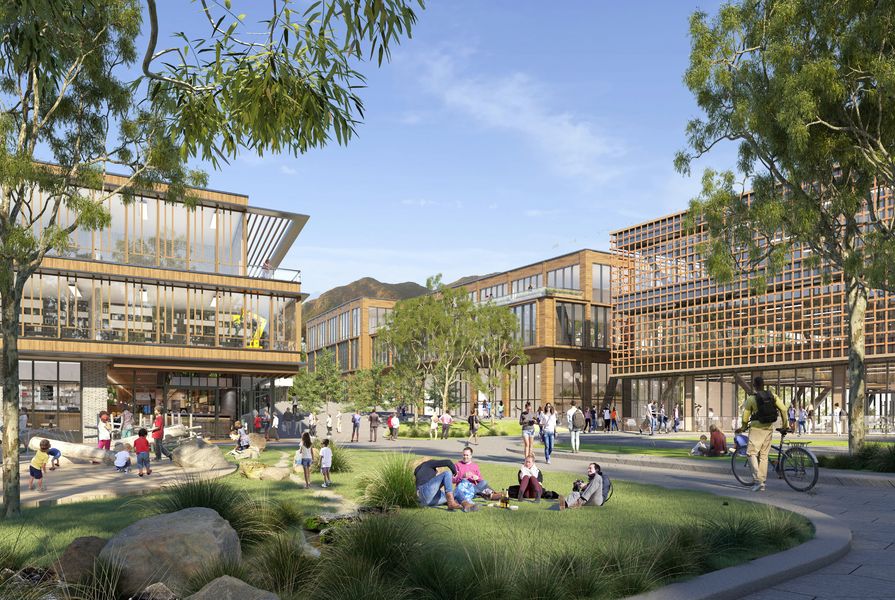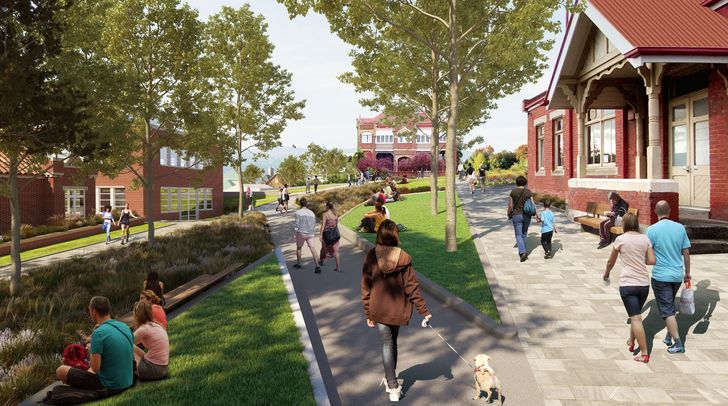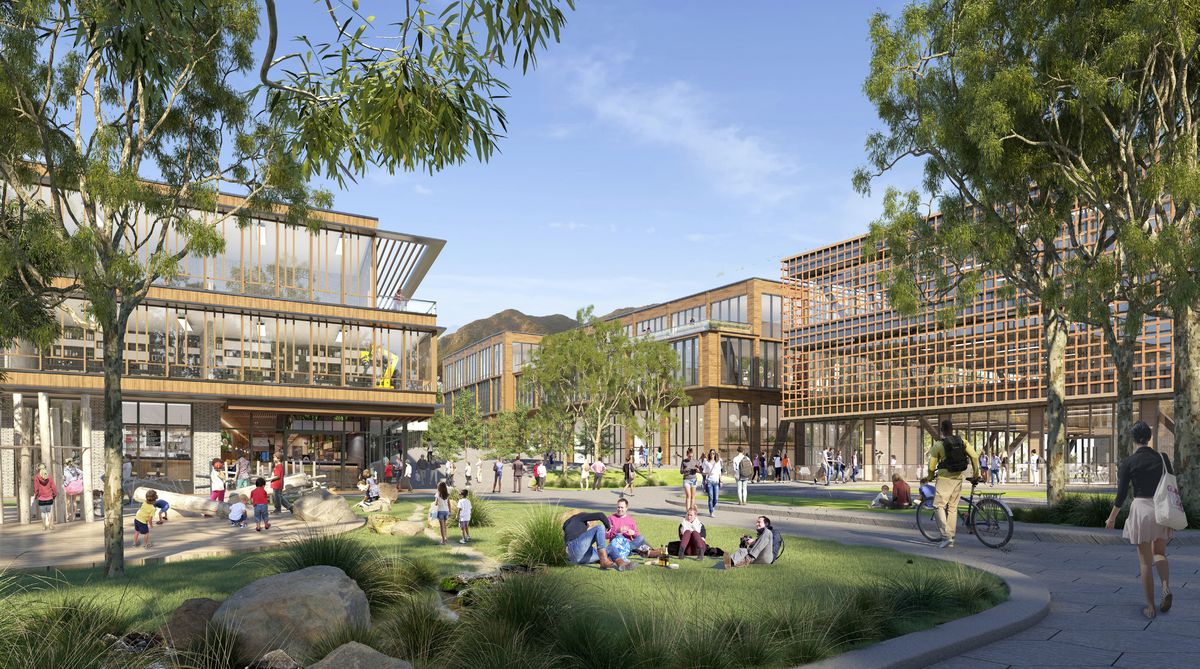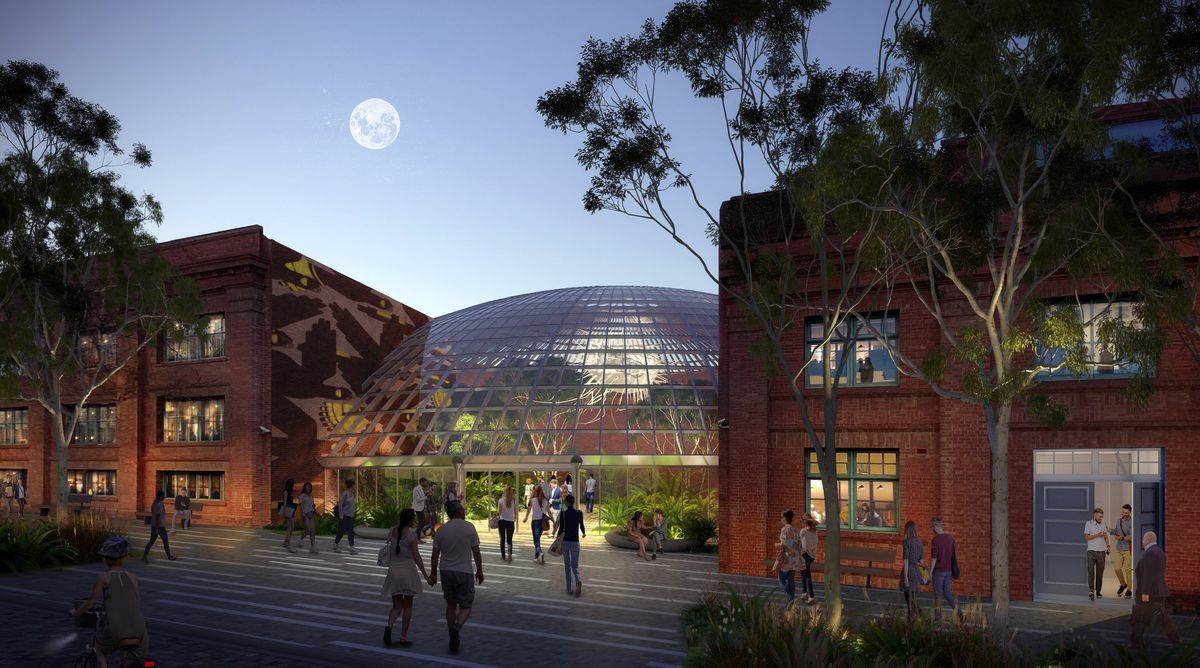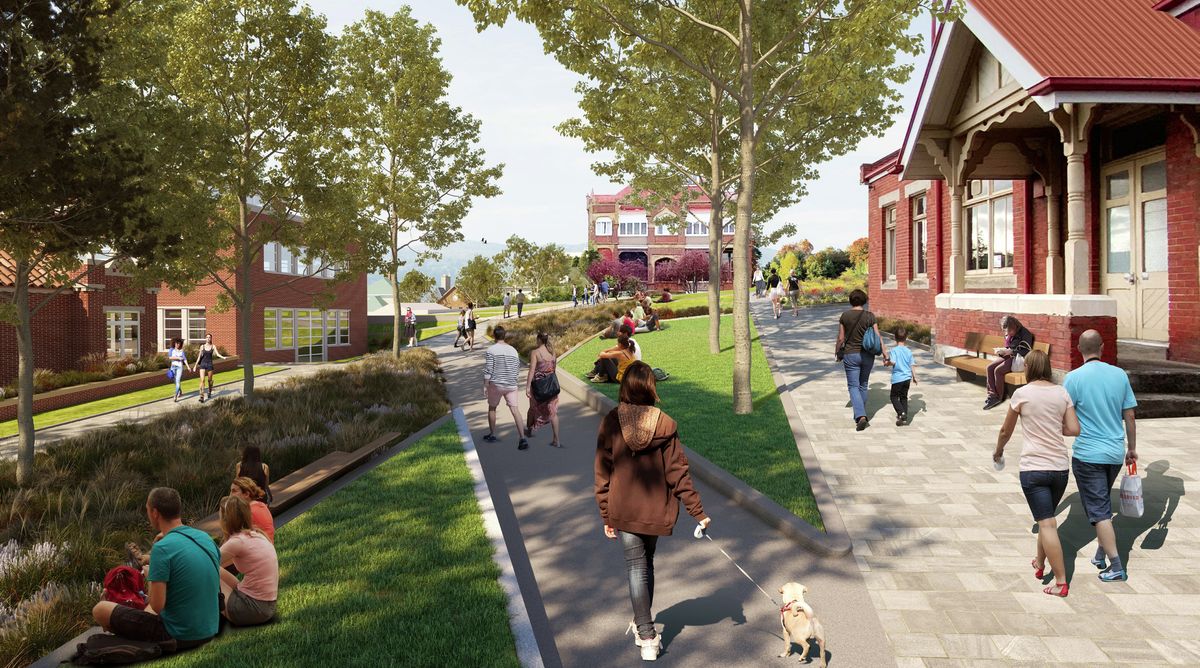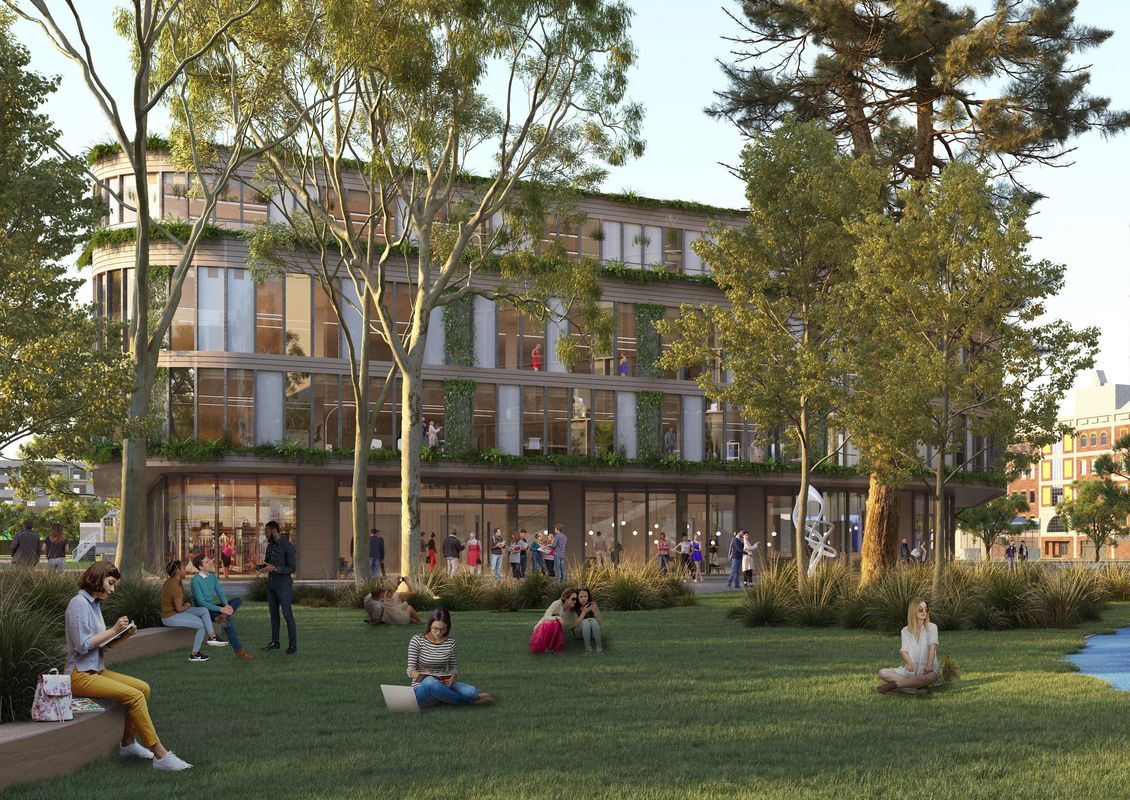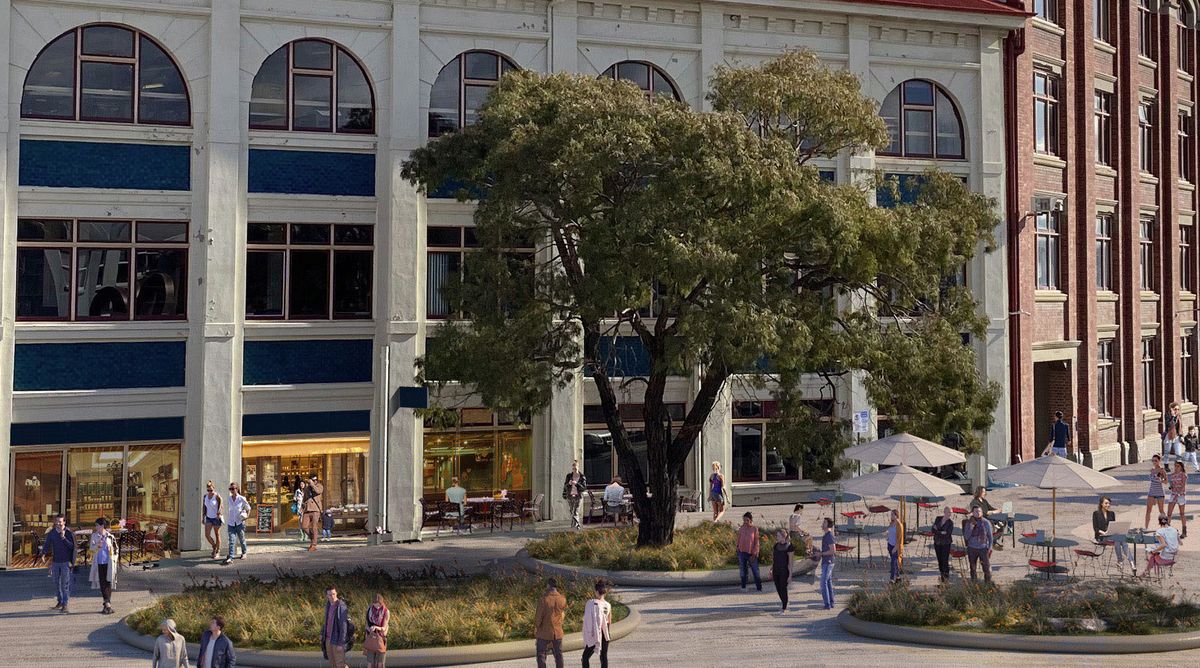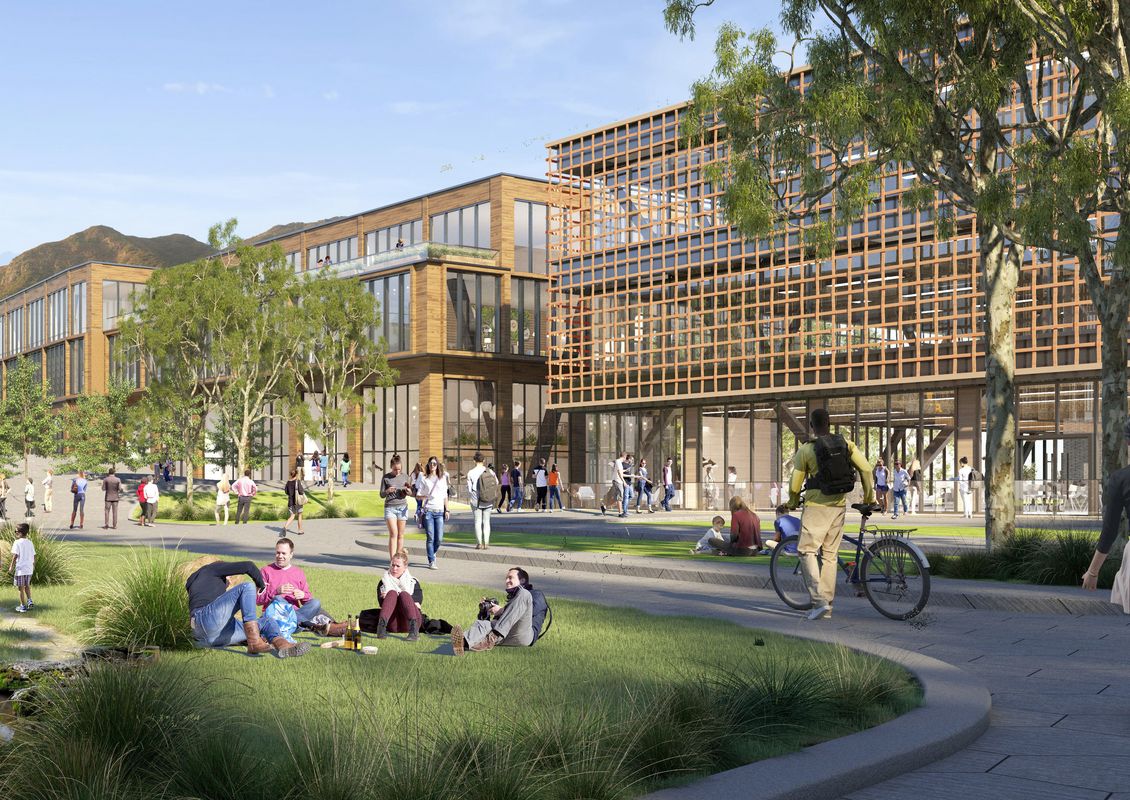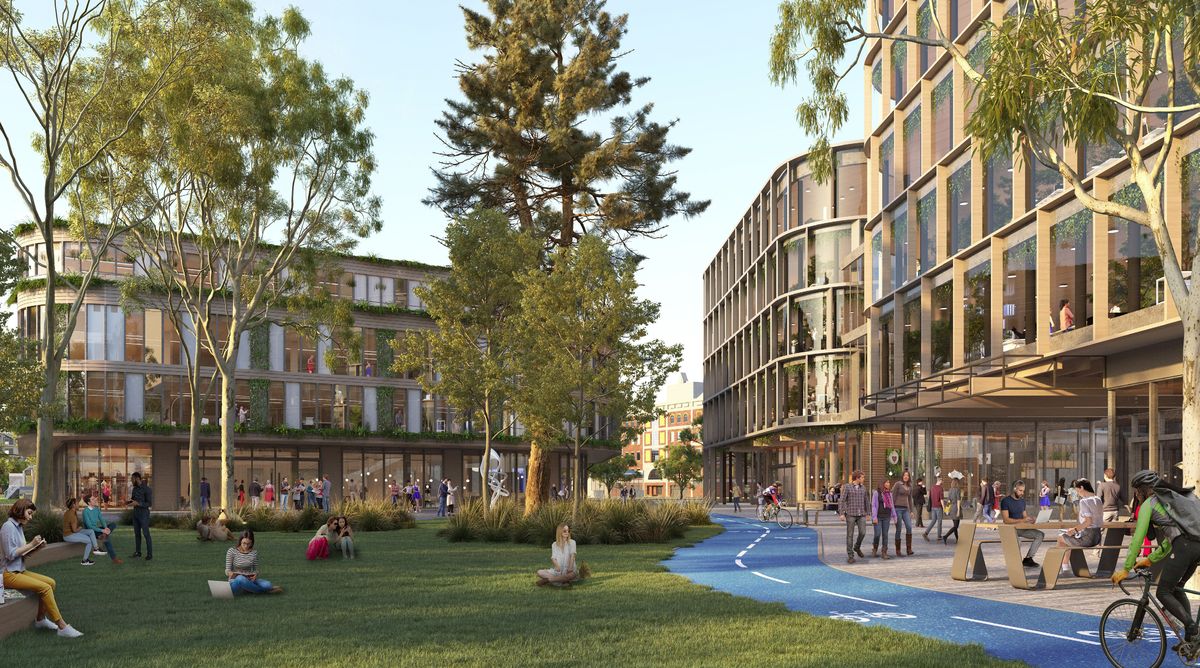The University of Tasmania will consolidate its Hobart campus in the heart of the city over the next decade, moving away from Sandy Bay, according to a preliminary urban design framework published this week.
Envisioning a “vibrant, contemporary campus which blends university and city life,” the Southern Campus Transformation framework was developed by the university with Gensler and Realm, with contributions from Leigh Woolley. It organizes the campus into five interconnected precincts.
The West End precinct, between Brisbane and Melville streets, will be home to engineering and technology. Straddling Elizabeth Street, Midtown will be the largest precinct, with the faculties of sciences, humanities, law, business, economics and the Riawunna Centre for Aboriginal Education, along with the library, student centre, university club and college and administration buildings.
Domain, next to the Queens Domain Parklands, was the original home of the university, and it will once again become the “the soul of the campus” with shared spaces for the university and Hobart communities along with nursing, psychology and pharmacy facilities.
The existing Medical Precinct will be strengthened with a new allied health clinic to be established in the former Theatre Royal Hotel and in the Wapping precinct the Hunter Street Creative Arts building will be retained and refurbished as the home of Creative Arts and Education.
The Domain is the historic home of the university.
Vice chancellor Rufus Black told The Mercury the move would make the university more accessible for the community.
“For the average person in Hobart, this produces a city with a whole new set of civic spaces, of parks they can access, of community facilities they can access, from libraries to facilities the community can access,” he said.
The university is also hopeful that the plans could be a catalyst for improved transport options in the city, potentially reigniting calls for a light rail link to the northern suburbs.
“We’d like to see a dedicated, high-frequency, high-capacity transport corridor and we really need to get going with it,” he said.
“The university alone has more than 1, 500 students who live in that corridor.
“There are many others who would benefit from that kind of transport link.”
The University of Tasmania has been busy expanding and redeveloping its campus assets in recent years, with two new buildings being built at its Inveresk campus in Launceston as part of a wider $344 million redevelopment, as well as a new building at the Cradle Coast campus, all designed by John Wardle Architects led teams.
The university has not revealed the architect behind the Southern Campus urban framework, and did not respond to enquiries in time for publication.

